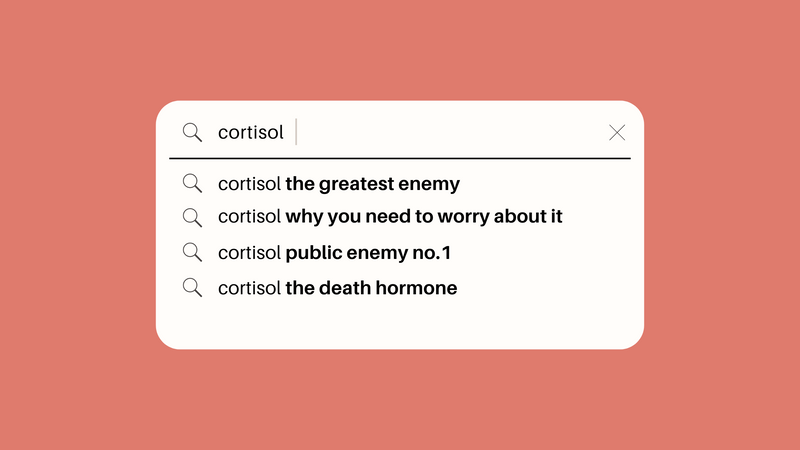It’s hard to describe a burnout until you’ve really felt it. The problem is that it’s not as easy to tell when one starts to creep up. You believe that you are doing everything you are supposed to - acing those high stress projects, not missing a single day of your HIIT class and doing that extra course on the weekends to add to your resume.
Last year, around October I was in a similar phase where I was doing everything possible till I physically and mentally couldn’t anymore. I thought a weekend of some R&R should do the trick like it always has? Well, I couldn’t have been more wrong! It was in fact a 3 month journey to bring myself back on track and it all started with learning how dysregulated my nervous system had become.
It all starts with the nervous system: the science behind a burnout
To understand a burnout, we need to first understand the autonomic nervous system -
The autonomic nervous system, as the name suggests, operates automatically, regulating functions beyond our conscious control – from heart rate and digestion to our fight-or-flight response. Here's where things get interesting: the autonomic nervous system has two key branches:
- Sympathetic Nervous System: This branch kicks in during stressful situations, triggering the "fight-or-flight" response. It elevates your heart rate, increases blood pressure, and puts your body on high alert.
- Parasympathetic Nervous System: The yin to the sympathetic yang, the parasympathetic nervous system promotes relaxation and restoration. It lowers your heart rate, aids digestion, and helps you return to a calm state.
Sounding the alarm
Thanks to evolution and survival mechanisms, humans developed a stress response, also called the “fight or flight” mode when faced with a life threatening situation - could be to save yourself from a tiger 1000s of years back or an incoming car in our direction today. When we were faced with a threat or danger of some kind, the body had to respond with alertness and help fight, that’s your sympathetic nervous system playing up. (1) It is literally thanks to this that humans have survived so many years. Cortisol, our stress hormone, is the key player in making you alert and helping you “fight” or “take flight” in a stressful situation.
Rest and Digest
This is the normal state of our body, one where we are at balance. When our parasympathetic nervous system is switched on, our body prioritises regular daily functioning like digestion, immunity, reproduction and growth. (2) When the sympathetic nervous system switch is turned on, your “rest and digest” is turned off. Think of this as a see-saw. While both the branches are working simultaneously, there is always one that is particularly activated. While the body is fighting, fleeing or freezing, the priority is obviously not to digest food or produce babies as a lot of primary body functions like digestion, reproduction and growth will have to shut down in order to prioritize the “life and death” situation that has been put into play by our sympathetic nervous system.
Your mom was right. It is your phone…well, kind of.
Cortisol, our stress hormone, is often made to be the bad guy because excess cortisol can lead to a lack of resting and digesting, but it’s not really cortisol’s fault! Who’s to blame then? Our moms were right when they said everything was the phone’s fault. (Sorry ma for not listening to you then!)
Today we’re in a chronic state of high cortisol - the never ending emails, constant WhatsApp notifications and all-time easy access to our friends’ lives and comparisons. And this has made us very sympathetic dominant.
Understanding the role of the autonomic nervous system allows us to approach burnout not as a personal failing, but as a physiological response to chronic stress. By addressing the root cause and working to restore balance, we can reclaim our well-being and navigate the demands of life with renewed resilience.
Well then, how do you find out which nervous system is ON at the moment or that you’re approaching a burnout.
A feeling of being tired all the time, poor appetite, disturbed sleep or not able to sleep on time, loopy thoughts, unable to calm down, craving sweet, fried or salty foods, being highly emotional and irritable and a decreased sex drive are all signs that you’re in “fight or flight” mode or that your sympathetic nervous system is switched on.
How to turn on the right switch?
Today we tend to accept a lot of these feelings mentioned above as common, but remember just because something is common doesn’t mean that it is right. You’re here on this planet to feel good, feel bliss and feel at ease!
The good news is that by being conscious about what we’re feeling, and making some positive lifestyle changes, we can support our body back into balance and turn on the parasympathetic nervous system. Here are a few ways that helped me in the past:
- Breathwork - When our body is in fight, flight or freeze mode, most of the oxygen is sent to our arms and legs in order to have a quick response action for the life threatening situation that our brain has perceived. Deep and slow breathing helps send more oxygen to our brain, signaling our body that it is safe and it can relax and thereby switching on the parasympathetic nervous system. (3)
- Boundary management - One of the most pivotal moments of my self regulating journey was starting therapy. It helped me understand the power of boundary management, which is so crucial when it comes to protecting your time & energy for what truly matters.
- A good sleep routine - You’ve heard this a million times before, but it all starts with a good sleep routine. Sleep is how we regulate our emotions, heal our body, and get the energy to tackle the world. So prioritising a good night sleep is one of the best things you can do to help battle a burnout.
- Herbs can help - In my practice, I love to incorporate nervines when it comes to regulating the nervous system. Nervines, a class of adaptogens, work to shift our nervous system from “fight or flight” to “rest & digest”. They are our closest allies when it comes to deepening our body’s ability to rest. I’ve incorporated these in our Bring Me Bliss mix which helps with stress relief and helps to nourish & strengthen the nervous system.
- Shake it off - Lymph, although often ignored, is an essential organ system that helps remove waste products, toxins and unwanted substances from our body. Massages that promote lymphatic drainage help alleviate physical symptoms that come with burnout, such as fatigue. (4)
Something else that I’ve seen that worked wonderfully for me is limiting my time on social media. While completely cutting it off may not be realistic, I try to be more intentional with it. Of course, I’m not perfect at staying away from the doom scrolling but I don’t intend to be perfect either. It’s all about balance! Feel free to mute people that don’t spark joy into your life and overtime work on feeling inspired by those who might be doing something you envision yourself doing.
Self-regulation is a journey, not a destination. Don't get discouraged if you don't see results overnight. You deserve to feel your best, and with a little effort, you can switch off fight-or-flight and embrace the power of relaxation.
Citations:
(1) Russell, G., Lightman, S. The human stress response. Nat Rev Endocrinol 15, 525–534 (2019). https://doi.org/10.1038/s41574-019-0228-0
(2) Chu, B., Marwaha, K., Sanvictores, T., et al. (2024, May 7). Physiology, stress reaction. StatPearls.
(3) Zaccaro, A., Piarulli, A., Laurino, M., Garbella, E., Menicucci, D., Neri, B., & Gemignani, A. (2018). How Breath-Control Can Change Your Life: A Systematic Review on Psycho-Physiological Correlates of Slow Breathing. Frontiers in human neuroscience, 12, 353. https://doi.org/10.3389/fnhum.2018.00353
(4) Xu, J. Q., Liu, Q. Q., Huang, S. Y., Duan, C. Y., Lu, H. B., Cao, Y., & Hu, J. Z. (2023). The lymphatic system: a therapeutic target for central nervous system disorders. Neural regeneration research, 18(6), 1249–1256. https://doi.org/10.4103/1673-5374.355741



























